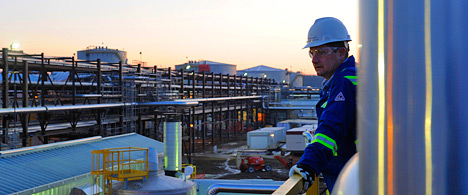
The Leismer Demonstration Project. (Photo: Øyvind Hagen)
The report contains performance indicators for the Leismer Demonstration Project (LDP) and surrounding Kai Kos Dehseh leases in northern Alberta. They measure operational CO2 intensity, air emissions, as well as water and land usage.
As expected in the start-up phase, Leismer’s steam-to-oil ratio (SOR) is high and correspondingly so is the CO2 emissions intensity per barrel of bitumen. These emissions are expected to decline considerably as production ramps up over the next 24 months.
Also covered in the report are Statoil’s actions to improve environmental performance as the leases are developed.

Lars Christian Bacher, president of Canadian operations.
This includes the company’s ambition to reduce its CO2 intensity by 40% by 2025. Extensive sustainable development activities are also included.
For Lars Christian Bacher, Statoil’s president of Canadian operations, the report represents a promise kept.
“Last spring Statoil announced our target to reduce CO2 intensity based on the implementation of a technology plan,” he said.
“At the same time, the company committed to publically report on our progress and performance – not only on CO2 intensity, but on a wide variety of environmental, technological and social metrics. Our ambition is to be in the forefront on technology development and implementation in order to improve recovery and reduce energy usage and our carbon footprint.”
The report was audited by an independent third party, and Statoil will use this standard of reporting for its oil sands activities as operations grow. Reporting key metrics on the oil sands reflects with Statoil’s value of being open.